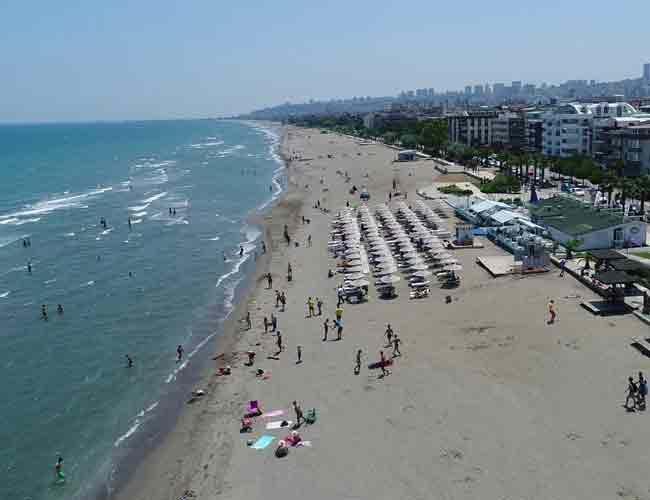
Turkey’s Disaster and Emergency Management Authority (AFAD) has issued a guide to inform citizens about the precautions to take while swimming as the summer season nears.
The guide, which can be seen on AFAD’s official website, lists the risks of swimming especially in the presence of currents. Special warnings have been issued for the areas with churning tides, a major cause of drowning in Turkish waters, with a video.
Accordingly churning tides, which are seen especially in the Black Sea coast of Turkey and dubbed the “insidious danger,” have been described as “quite strong currents moving from shallow water to deep water that are observed in areas that have seabed stricture of sand dune-crack-sand dune.”
Due to the churning tides, which even professional swimmers cannot resist, hundreds of people face the risk of drowning each year, while some of them get killed.
The power of the tides, which are seen in windy, stormy and wavy weather, increases with wave height.
Contrary to common knowledge, the churning tides do not pull swimmers to the bottom of the sea, but carry them away from the shore to the open seas.
The guide warns people not to swim in windy conditions, while urging them to prefer coasts and beaches that have lifeguards and medical personnel, while also advising them to use proper swimming gear and have equipment such as life jackets and lifebuoys.
In the event of a trouble with strong tides, it is essential to keep calm, the guide says, while noting that instead of trying to swim back to the shore, swimmers should move sideways to be able to beat the current.
In its guide, AFAD also warned against swimming in rivers, even if the surface seems calm. Water channels, reservoirs and dam lakes should not be used for swimming, the guide said, also urging people to never swim alone.
Panicking is the most important factor in drowning cases, the guide said, noting that it will be almost impossible for a person to be rescued if he or she panics in case of a drowning risk.
AFAD also listed potential risks and warnings for those swimming. It tells swimmers to never swim with a full stomach; to not suddenly jump in the water; to not dive in waters if the swimmer doesn’t have knowledge of the water’s depth; to always warm up before getting into water and avoid doing dangerous pranks while in water.
The guide also noted the importance of first aid in cases of drowning, giving some basic information on how to handle the victim in such situations.